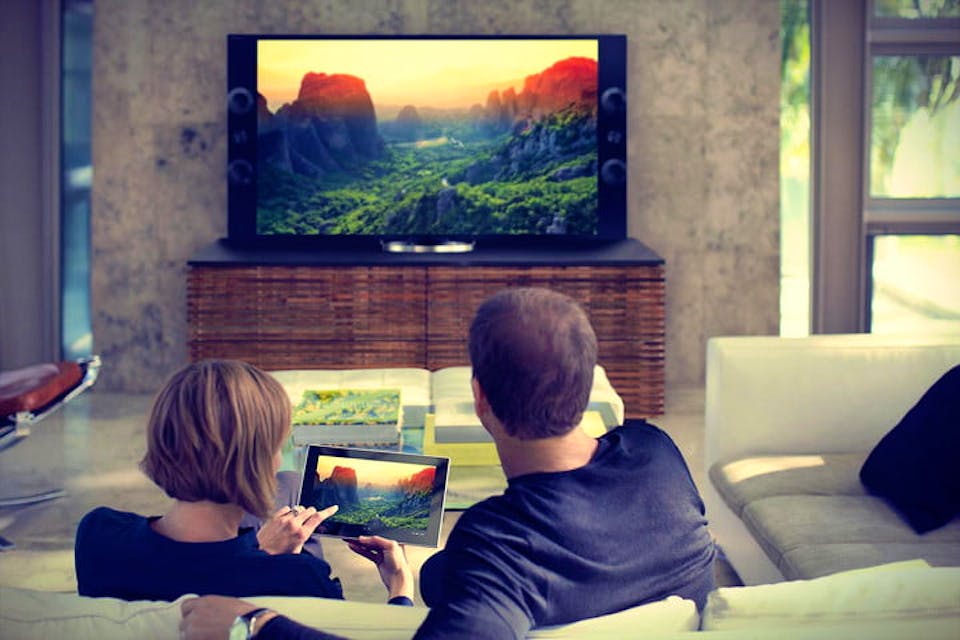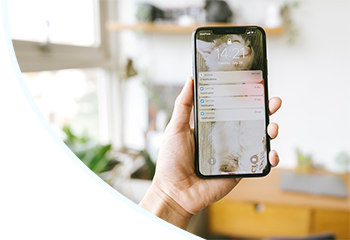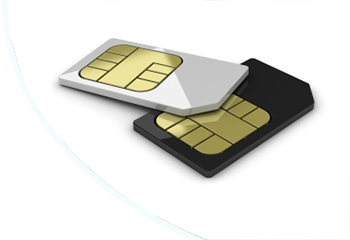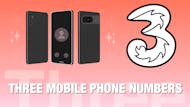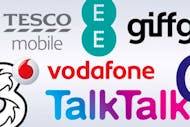Whether you’re catching up with last night’s TV on your commute, getting lost in the latest best-seller on a Sunday afternoon or keeping your children occupied on long journeys with their favourite games, the tablet's smaller screen size is incredibly convenient.
There are however occasions, like when you want to stream a film on Netflix with a group of friends or show-off your sunny holiday photos, when being able to use a bigger, glossier screen works much better.
We’ve created this guide to walk you through how to connect Samsung Galaxy tablets and Apple iPads up to your TV so that the days of everyone awkwardly trying to position themselves around one tiny tablet propped precariously up on the coffee table are a thing of the past.
How to connect Samsung Galaxy tablet & TV
The simplest way to connect your Samsung Galaxy tablet up to your TV is to use a HDMI cable.
Normally, you'd have to just plug one end of the cable into your device’s dedicated HDMI port and the other into the back of your TV, but as Samsung have decided to ditch this set-up in favour of making the Galaxy tablets compatible with the more advanced USB Type C and micro USB 2.0 cables, you’ll also need an additional adapter.
Both the Galaxy S3 tablets and larger Galaxy Pro S tablets have USB Type C ports while all of the others feature micro USB 2.0.
These adapters, known as USB Type C to HDMI or micro USB 2.0 to HDMI, are available from all kinds of different online retailers and slot neatly into the corresponding port on your device so that a HDMI cable can be plugged into them and then run across the room to your TV.
Once you’ve got this all arranged, press the source button on your TV remote and navigate through to whichever HDMI channel is displaying your tablet’s home screen.
How to connect Apple iPad & TV
Apple Airplay Mirroring can be used without an internet connection to wirelessly connect your iPad up to an Apple TV streaming box but as you’ll only be able to view content which is stored on your phone, the best option for the majority of users will again be to use a HDMI cable.
As with the Samsung Galaxy tablet, none of Apple’s iPad’s possess a dedicated HDMI port, The original iPad, iPad 2 and iPad 3 have what known as a 30-pin dock connector while the later models feature a smaller lightning connector, so you’ll need to purchase another adapter.
The 30-pin or lightning Digital AV Adapter can be bought from Apple directly and work much the same as the USB Type C and micro USB 2.0 variants, with one end able to be plugged into your device and the other offering you a HDMI port.
Then it’s only a matter of pressing the source button on your TV and flicking through to the correct HDMI channel.
HDMI cables
HDMI, or High Definition Multimedia Interface, cables work to transfer the video and audio files from one device to another and are readily available from a huge range of different online and high-street retailers for as little as £3.
Depending on what you’ll be connecting your tablet to your TV for, you might want to opt for a longer one which will be able to stretch across the room from the TV to where you sit so you can control what’s being shown on the bigger screen without having to keep getting up.
Connecting via Wi-Fi
There is also the option to connect your tablet up to your TV via WiFi if you don’t like the thought of having a HDMI cable trailing across the room with Samsung SmartView or Apple Airplay Mirroring.
SmartView works via a free-to-download app which is available on both Galaxy tablets and Apple iPads but will only allow you to connect your device to a Samsung Smart TV.
Airplay Mirroring on the other hand, is exclusive to Apple devices and works solely in conjunction with the Apple TV streaming box.
Ensure your tablet and Smart TV are connected to the same WiFi network before launching the SmartView app. Press the connect to TV button and then select the name of your Smart TV from the drop down list.
Again make sure your iPad and Apple TV are connected to the same network and swipe up on the screen to open the control centre. Tap the Screen Mirroring symbol, which looks like a TV with a triangle across it, and enter in your Apple TV passcode if necessary.
